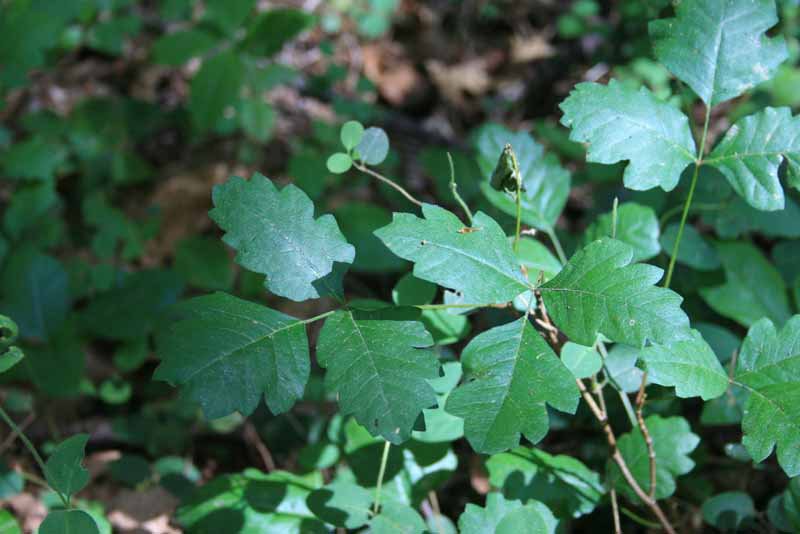
June 1, 2017 - Each year thousands of adults and children are treated for the itchy side effects of poison oak. Because they haven’t learned to identify it in the wild, people unknowingly walk through it, play in it, and yes… even eat it! Some people are immune to it or only contract mild rashes when exposed. Most people, however, aren’t so lucky. Upon contact they develop a spreading, very itchy and sometimes painful rash. A natural oil on the stems and leaves of poison oak, called urushiol, is the culprit. The oil adheres to skin and clothing and can spread by touch. Whatever you do, if you think you have been exposed, DO NOT TOUCH YOUR EYES, or anything else for that matter. As quickly as you can, take a lukewarm shower (NOT HOT) and wash the affected area thoroughly with soap. If a rash develops, a visit to the doctor or the local pharmacy may be in order. NOTE: smoke from burning poison oak is a special problem and can cause severe reactions in people, internally as well as externally. Everyone, whether they react to poison oak or not, should learn to recognize it and then look carefully for it whenever they go outside. It is always best to avoid exposure whenever possible. If you are going to spend any time out in the woods or other wild places at elevations between sea level and 5000' you might want to memorize some things about this plant.
What to look for
Three Parted Leaves
 The leaves are “3 parted.” That means that each leaf is divided into three leaflets. Leaf shape can vary from straight on the edge to wavy or lobed several times along the edges. Depending on the time of year, the leaves can be almost any color… yellowish, deep green, red, orange or reddish black. The oil in the plant causes the new and emerging leaves to be very shiny.
The leaves are “3 parted.” That means that each leaf is divided into three leaflets. Leaf shape can vary from straight on the edge to wavy or lobed several times along the edges. Depending on the time of year, the leaves can be almost any color… yellowish, deep green, red, orange or reddish black. The oil in the plant causes the new and emerging leaves to be very shiny. How it grows and what stems look like
In winter and early spring look for clumps of bare light brown or grayish stems, short or tall with a strong upright habit. Sometimes, when it grows next to a tree and the exposure is favorable, it can climb to 20' or more by using the tree for support. Older plants tend to branch but clumps of younger plants are usually made up of singular stems. At lower elevations, on dry slopes exposed to strong sun, the plants tend to spread out a bit and take on a more unkempt appearance. Plants leaf out in spring and keep their leaves until autumn.
Flowers and berries
Poison oak bears small, hanging, clusters of yellowishgreen flowers in the spring that turn to small, greenishwhite, berries in late summer. The berries hang on through early winter with only the stems remaining by spring. If you are uncertain that the plant you are looking at, or are about to grab, is poison oak… look closely for little hanging stems with white berries, or the remnants of berries (they can appear like little bunches of tiny dried up grapes!)
Poison oak is a nuisance to people but compensates by having considerable wildlife value. The white waxy berries are a popular food for songbirds during fall migration in when other foods are scarce. Robins, catbirds and grosbeaks especially like the berries. Many birds feed on insects hiding in the tangled vines. Small mammals browse on the poison oak foliage, twigs and berries.
Interesting Fact!
Poison Oak is not botanically related to the oak plant family; it is in the cashew family, along with sumac.
Source: Shasta-Trinity National Forest - USDA - FSPSR








